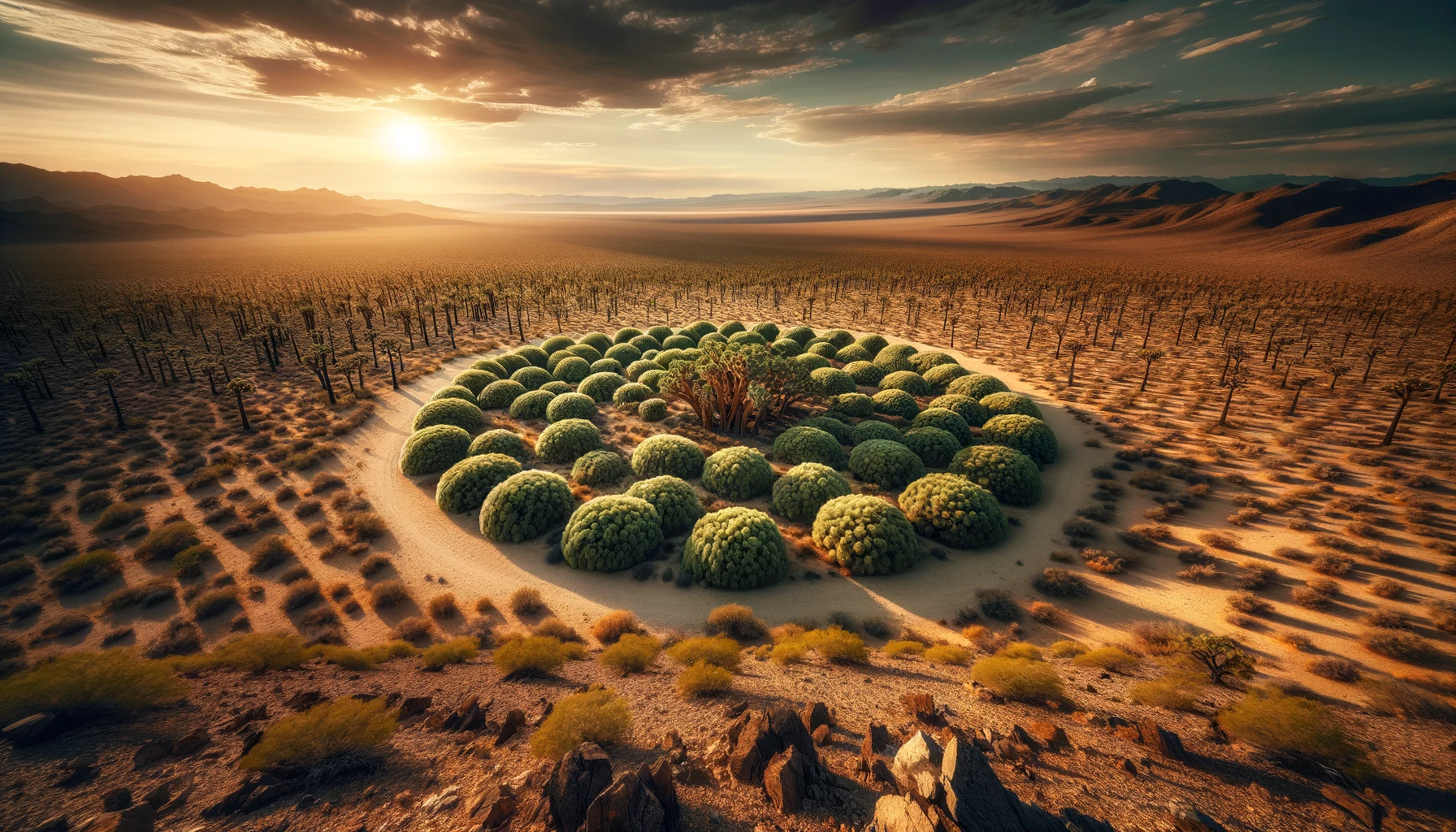In vast stretches of the Mojave Desert, where the sun reigns supreme and the ground tells tales of resilience, thrives an organism whose life story challenges our understanding of longevity and survival. The King Clone, a creosote bush ring, stands as a living testament to the incredible endurance of desert flora. Estimated to be around 11,700 years old, this ancient being is not just a plant but a chronicle of time itself, woven into the very fabric of the desert ecosystem.
The Discovery of King Clone
The discovery of the King Clone dates back to the 1970s when Frank Vasek, a professor at the University of California, Riverside, stumbled upon this remarkable specimen. Through meticulous research, Vasek and his team determined the age of King Clone by calculating the growth rate of the creosote bush, known scientifically as Larrea tridentata. The bush expands through a process called clonal growth, where it produces genetically identical offshoots that form a ring as the central stem dies off. This slow but steady expansion has allowed the King Clone to spread over a diameter of approximately 67 feet, marking it as the oldest known living plant of its kind.
The Biology of Resilience
Creosote bushes are a dominant species in the desert landscapes of North America, celebrated for their ability to withstand the harsh conditions of their environment. Their survival strategy is a marvel of nature; they can reproduce both sexually, through the dispersal of seeds, and asexually, through the clonal growth that gave rise to the King Clone. This dual approach to reproduction, coupled with their ability to harness limited resources, has enabled creosote bushes to flourish across the desert for millennia.
Conservation Efforts and Challenges
The story of the King Clone goes beyond its biological wonder; it underscores the pressing need for conservation efforts in desert environments. The Mojave Desert, like many delicate ecosystems, faces threats from human activity, climate change, and invasive species. These challenges pose a risk not only to individual species like the creosote bush but to the desert’s ecological balance as a whole.
Conservation efforts in the Mojave and other deserts focus on several key areas:
- Protection of Land: Designating protected areas to preserve critical habitats and prevent land degradation from overuse or development.
- Research and Monitoring: Conducting ongoing research to understand the impacts of climate change on desert ecosystems and monitoring species health and population dynamics.
- Public Awareness and Education: Raising awareness about the importance of desert ecosystems and the need for conservation through educational programs and community involvement.
- Restoration Projects: Implementing projects to restore degraded habitats, combat invasive species, and reintroduce native plants and animals to their natural environments.
The Path Forward
The King Clone serves as a symbol of endurance and a reminder of our responsibility to protect the natural world. As conservationists work to safeguard the Mojave and other deserts, the lessons learned from these ancient plants can guide efforts to ensure these ecosystems continue to thrive for millennia to come. Through combined efforts in protection, research, and education, we can hope to preserve the rich biodiversity of the desert and maintain its role as a vital part of our planet’s ecological heritage.

In reflecting on the history and ongoing conservation of the King Clone and its desert home, we are reminded of the intricate connections between life, time, and the environment. These ancient plants are not just survivors of the past; they are beacons for the future, guiding us towards a deeper understanding of resilience, adaptation, and the importance of stewardship of our natural world.
